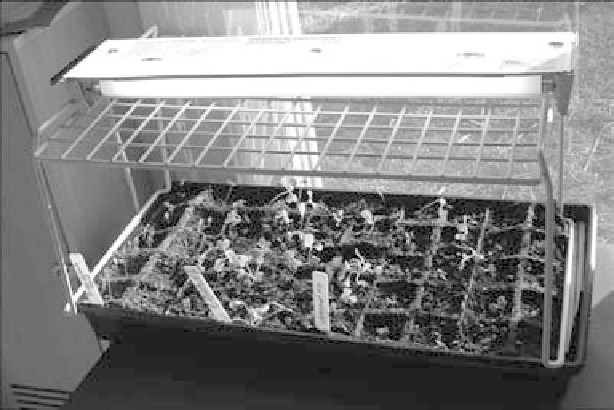Agriculture Reference
In-Depth Information
It's not hard to rig a grow light to be just a few inches above your seeds (within 3 to 6 inches is ideal).
Soil or seed mix.
Let the debate begin! Peat moss? Potting soil? Organic-and-specially-created-
and-thus-overpriced-seedling soil? What on Earth should you plant your seeds in anyway? Some
of the seed starting kits come with little transplantable pots that can help make that step easier for
beginners. Other gardeners love to come up with their own seed starting mixes—especially when
there are a lot of seeds to be started. When you move beyond a single kit, more than a couple dozen
plants or so, it will probably be more economical for you to start seeds with your own soil.
Most seed starting mixes come out to something pretty close to one third organic matter (compost
or peat moss, for example), one third moisture retention and drainage matter (perlite or vermiculite),
and one third soil. Oftentimes gardeners will use a screen to sift out finest soil particles and only
use that in their seed starting mixes to make it easier for the seedlings. Most commercial seed start-
ing mixes will have something close to this type of blend.
Moisture.
As with all plants, seedlings need water. Very small seeds can be washed away by heavy
watering, so water with care! Some gardeners use a mister or even a simple spray bottle set to mist
setting. Other times seed starting kits are watered from below, eliminating the need to disturb
seeds at the soil level at all. Whatever you use, keep the soil consistently moist but not soggy.
Growing your plants from seed adds another level to your vegetable garden planning, and saving
your own seeds for the next year is another level yet. Be sure to check out the Seed Starter Log in
Appendix B's journal pages.













